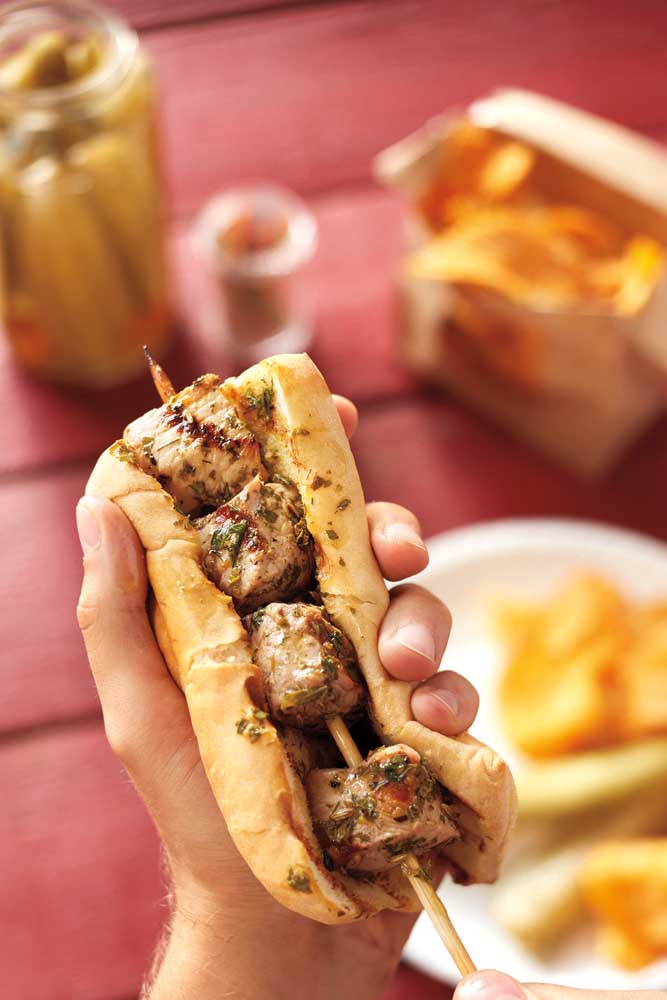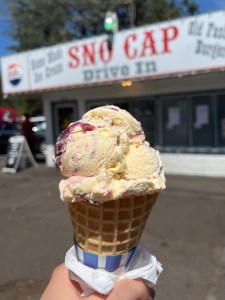How to master grilling season
Published 12:00 am Tuesday, June 14, 2016

- Submitted photoThese Pork Loin Spiedies are a perfect way to show off your newfound grilling skills.
With grilling season having officially begun, thoughts turn to the big issues — namely, who cleans the grill?
That should be on your list before the food even leaves the kitchen, which makes sense to anyone operating the grill.
Trending
But to be even more prepared for the summer cooking season, we turned to the grillmeister himself, Jamie Purviance, author of 15 books for Weber Grill, three of them New York Times best-sellers (“Weber’s Way to Grill,” a James Beard Award finalist; “Weber’s Smoke,” and “Weber’s New Real Grilling”). His new book, “Weber’s New American Barbecue: A Modern Spin on the Classics,” is hot off the presses.
We asked him for a Top 10 list of do’s and don’ts for making the best meal outdoors. Here’s what he had to say:
Do preheat the grill
A lot of cooks use a grill that’s not properly preheated and they end up with food sticking or not browning very well — and not tasting particularly good, either. If the grate is cold, the food will stick and never have a decent chance of searing properly or developing those awesome grill marks. Even if a recipe calls for medium or low heat, you should preheat the grate on high first for 10 minutes. The grill temperature should reach at least 500 degrees.
Don’t start with a dirty grate
If you left some stuff on the grate from your last barbecue, it could be the glue that holds your new food to the grill a lot longer than you want. To clean the grill, wait until the grill gets very hot (preheat it for at least 10 minutes), then scrape off the last meal. The best tool for the job is a sturdy, long-handled brush with stiff, stainless steel bristles.
Trending
Do get your act together
Bring everything you need near the grill before you start to cook. That means all the necessary tools, as well as food that is prepped — oiled and seasoned — along with any glaze or sauce or whatever else. Don’t forget the clean platters for the cooked food.
Do give yourself at least two heat zones
Have one for direct heat (where the fire is right under the food) and one for indirect heat (where the fire is off to the side). This provides some flexibility, so you can move your food from one zone to another if the food is cooking too quickly or the coals are flaring up. Think of this as a safety zone. It also allows you to grill two very different foods at one time. There are foods that do well with a combination of types of heat, such as when you sear food on one side and then cook it more slowly on the other.
Don’t overcrowd the grill
Packing a lot of food into a tight space is asking for trouble because it restricts where you can move the food. Case in point: If you try to squeeze too many pieces of food over direct heat, the pieces at the edge of direct heat, right where the indirect heat begins, will cook unevenly. The direct heat should extend at least 3 inches beyond all the items you are grilling. And try to leave some space between each item of food so that you get your tongs in there easily and move the food from one area to another.
Do use the lid
Keep the lid down as much as possible. It traps some of the smokiness that develops on the grill, which is important for flavor. It also eliminates a lot of flare-ups that are fueled by air rushing through the grill. Keeping the lid down also tends to cook things a little faster because now the heat is coming from below and above, reflecting off the lid. That’s really good for quick-cook items such as chicken breasts, hamburgers and pork chops, which dry out quickly. If you can cook them less on both sides by a couple of minutes, they will be juicier. Don’t forget to open the vents of a charcoal grill’s lid at least halfway. Every fire needs a little air to keep on burning.
Don’t fiddle with food
Turn the food only once or twice. This is really important. It means you won’t have the lid open so much, which affects how quickly food cooks (which impacts how dry it becomes). Cooks tend to try to turn food too early. This is especially true of fish and chicken with the skin on. As soon as food lands on the grate, it tends to stick, but if you leave it long enough, it releases. The problem is most cooks don’t wait long enough, so they end up with some issues with sticking. And if you move the food too much, it never really develops as deep a sear as it could.
Do take charge of the fire
This is more of an issue with charcoal. Lit charcoal changes over time. It’s quite hot in the beginning and then it fades out slowly or quickly. You need to take charge of the fire by refueling it, by pushing the coals around to suit your needs, by sweeping away the ashes that clog the bottom vents, and by adjusting the vents on the lid for optimal airflow. For the best result, anticipate what the fire is going to need and act proactively.
Do watch for doneness
Sometimes in grilling the most important thing to know is when to stop. Learn doneness clues, as in the gently yielding firmness of perfectly grilled chicken when you press the surface with a fingertip. If you want an even more reliable test of doneness, get an instant-read thermometer, which will help you pinpoint that moment when your food is at its best.
Do use the grill for more than grilling
This is the spirit of the new book, that there is more to grilling than meat over the flames. There is a whole world of techniques that you can do on a grill, whether it’s charcoal or gas. You can smoke or roast, simmer, sauté or stir-fry on the grill. If you want to be a true master of the grill, expand your repertoire and do a more mixed menu.








